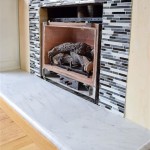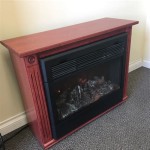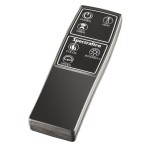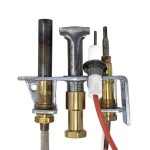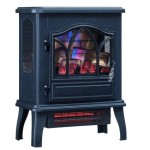New Braunfels Outdoor Fireplace Replacement Screens: A Comprehensive Guide
Outdoor fireplaces offer a captivating ambiance, extending living spaces and providing warmth on cooler evenings. However, the safety and longevity of these features often depend on well-maintained components, particularly the fireplace screen. A compromised screen can lead to hazardous situations, diminishing the enjoyment and potentially causing damage to the surrounding area. In New Braunfels, Texas, where outdoor living is highly valued, understanding the need for and options regarding outdoor fireplace replacement screens is crucial for homeowners.
This article will delve into the necessity of replacing outdoor fireplace screens, the factors that influence screen selection, the types of screens available, the process of measuring and installing a replacement, and key considerations for maintaining the new screen. The goal is to equip New Braunfels residents with the knowledge required to make informed decisions regarding their outdoor fireplace safety and enjoyment.
Fireplace screens serve several critical purposes. Primarily, they act as a barrier, preventing sparks and embers from escaping the firebox and potentially igniting nearby flammable materials like dry leaves, patio furniture, or even the house itself. This spark containment is particularly important in areas prone to dry conditions, such as those found in parts of Texas. Secondly, a well-fitting screen helps to prevent small animals or debris from entering the firebox when not in use, keeping the area clean and reducing the risk of chimney obstructions. Finally, fireplace screens can enhance the aesthetic appeal of the fireplace, adding to the overall ambiance of the outdoor space.
The Imperative of Replacement: When to Upgrade Your Fireplace Screen
Understanding when to replace an outdoor fireplace screen is vital for maintaining both safety and functionality. Several indicators suggest that a replacement is necessary, ranging from obvious physical damage to more subtle signs of wear and tear.
One of the most evident reasons for replacement is visible damage to the screen itself. This includes holes, tears, or significant rusting. Even small holes can compromise the screen's ability to contain sparks and embers, rendering it ineffective. Rust, while it may start small, can weaken the metal over time, eventually leading to structural failure of the screen. Any sign of compromised structural integrity warrants immediate attention and consideration of replacement.
Another critical indication is damage to the frame or any moving parts, such as hinges or latches. A warped or broken frame can prevent the screen from fitting properly, creating gaps that allow sparks to escape. Faulty hinges or latches can make it difficult to open and close the screen safely, increasing the risk of burns or other injuries. These components are essential for secure operation and if compromised, the entire screen should be considered for replacement.
Age is also a significant factor. Even if the screen appears to be in relatively good condition, prolonged exposure to the elements can weaken the metal and reduce its effectiveness. Years of being exposed to sun, rain, and temperature fluctuations can cause unseen corrosion and degradation, particularly in areas with high humidity like New Braunfels. As a general guideline, if the screen is several years old and of unknown quality, it is prudent to consider replacement as a preventative measure.
Finally, if the screen no longer fits properly due to changes in the fireplace structure or modifications to the surrounding area, it should be replaced. Gaps around the edges of the screen can render it ineffective, negating its safety benefits. Ensuring a snug and secure fit is paramount for proper spark containment.
Navigating Screen Selection: Types and Considerations
Selecting the appropriate replacement screen involves careful consideration of various factors, including the type of screen, the material it is made from, the size and style, and the overall aesthetic of the outdoor space. Understanding the different options available is crucial for making an informed decision that meets both safety and aesthetic requirements.
Several types of fireplace screens are available, each with its own advantages and disadvantages. Single-panel screens are the simplest and most common type. They consist of a single mesh panel that covers the entire opening of the fireplace. These screens are typically the most affordable option and are suitable for smaller fireplaces. However, they require complete removal for adding wood to the fire, which can be inconvenient.
Bi-fold screens consist of two hinged panels that fold open to allow access to the firebox. These screens offer greater convenience than single-panel screens, as they do not need to be completely removed for adding wood. However, they may be slightly more expensive and can be less stable than single-panel screens.
Tri-fold screens are similar to bi-fold screens but consist of three hinged panels. These screens offer even greater stability and can be adjusted to fit a wider range of fireplace openings. However, they are typically the most expensive option.
Beyond the type of screen, the material is a crucial consideration. Steel is a common and affordable material for fireplace screens. It is durable and can withstand high temperatures. However, steel is prone to rusting, especially in humid climates, so it requires regular maintenance and may need to be replaced more frequently. Stainless steel offers superior rust resistance compared to standard steel, making it a more durable and long-lasting option. However, stainless steel screens are typically more expensive.
Another factor to consider is the size and style of the screen. The screen must be sized correctly to fit the fireplace opening snugly. Measure the width and height of the firebox carefully to ensure a proper fit. As for style, there are numerous options available, ranging from simple and functional designs to more decorative styles with intricate patterns and embellishments. Choose a style that complements the overall aesthetic of the outdoor space.
Finally, consider any special features or customization options. Some screens come with added features such as tool holders, spark guards, or decorative handles. Customization options may include choosing a specific finish color or adding a personalized design.
Measurement, Installation, and Maintenance: Ensuring Longevity
Proper measurement, installation, and ongoing maintenance are essential for ensuring the safety, functionality, and longevity of a new outdoor fireplace screen.
Accurate measurement is the first step in ensuring a proper fit. Measure the width of the firebox opening at the top, middle, and bottom, and use the widest measurement. Then, measure the height of the firebox opening at the center. It's imperative to measure at multiple points as fireplace openings may not always be perfectly uniform. When selecting a screen, consult the manufacturer's specifications to ensure that the screen is slightly larger than the firebox opening, providing a secure overlap. In some instances, professional measurement services may be advised, especially for custom-built fireplaces.
Installation typically involves simply placing the screen in front of the firebox opening. However, it is important to ensure that the screen sits flush against the fireplace surround and that there are no gaps around the edges. If necessary, use shims or other materials to fill any gaps and create a secure fit. For screens with hinges or latches, ensure that these components are properly aligned and functioning smoothly. If the screen requires assembly, follow the manufacturer's instructions carefully. If unsure about any aspect of the installation process, it is advisable to consult a professional. Safety precautions include wearing gloves to protect hands and ensuring the fireplace is completely cool before handling the screen.
Regular maintenance is crucial for extending the life of the fireplace screen. This includes cleaning the screen regularly to remove soot, ash, and other debris. Use a soft brush or cloth and a mild soap and water solution. Avoid using harsh chemicals or abrasive cleaners, as these can damage the finish of the screen. Inspect the screen regularly for signs of rust or damage. If rust is present, remove it with a wire brush and apply a rust-resistant paint. Lubricate hinges and latches periodically with a silicone-based lubricant to keep them functioning smoothly. When not in use, store the screen in a dry, sheltered location to protect it from the elements, especially during the off-season. Proper storage significantly reduces the likelihood of rust and degradation.
By understanding the importance of fireplace screens, diligently selecting the right type and material, and practicing proper installation and maintenance, New Braunfels residents can ensure the safety and enjoyment of their outdoor fireplaces for years to come. A well-maintained fireplace screen is not just an accessory; it's an essential component of a safe and inviting outdoor living space.

Char Broil 03505785 Tino Deluxe Outdoor Fireplace Ereplacementparts Com

Bbq Standing Grill Iron Embers

F Corriveau International Outdoor Furniture Fireplace Panel Cover For Fire Pit 1 Qp20sqx 001 Gri Rona

F Corriveau International 20 In W X D 28 H Black Steel Outdoor Wood Burning Fireplace Qp20sqx 001 F74 Rona

New Braunfels Brand Fire Pit Ebth
Fire Pits In South Yorkshire Garden Furniture Equipment For Gumtree

Rocking Outdoor Living Space Cobra Stone Inc

Top 10 Best Fireplace Near New Braunfels Tx November 2024 Yelp

All Pro Solar Screens 14 Photos New Braunfels Shades Blinds Phone Number Yelp

Fire Pit Screen Replacement Target
Related Posts

